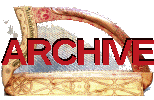

|
If we want to play the harp in the old Gaelic traditions of Scotland and Ireland, we need to get an instrument.
I’m quite interested in the issues to do with how to choose a harp, how to judge the different designs and how to know what we really want.
Harps are expensive. There’s no getting around that. I think that we should be basically spending as much money as possible on our instruments. There is no point trying to do this on the cheap. If you are dedicated and apply yourself, you should be able to rent or borrow a harp at the beginning. The Historical Harp Society of Ireland has harps available for rental to people who are taking regular lessons. But in the long term you need to plan and budget to buy a harp for yourself. You will probably pay more for your house than you pay for your harp. But you might easily pay more for your harp than you pay for your car. Plan and budget accordingly.
Choosing a harp
New or secondhand? Simplified or full-spec?
There are not many secondhand harps on the market, and if you want to go down this route you will be at the mercy of what little choice the market offers you. The advantage is, that you will be able to try or at least look at the instrument before you buy it. On the other hand, commissioning an instrument is full of its own problems. The harpmaker might be slow, they might take years to make you rharp. It might turn out differently from what you imagined. Commissioning an instrument is always a risk, but it also can give you the maximum control over what you get. If you want me to advise you or your harpmaker, get in touch.
There are now simplified historical Gaelic harps on the market, for example the HHSI Student harps. These can give you a full-sized harp, with the correct design and ergonomics. But they are a little clunky to play, they can be heavy, and not as responsive as a proper harp. These are best for beginners or for class use. If you do end up going for a simplified model, make sure you choose a harp that is correct full-sized design, with the full number of strings and the correct full-size ergonomics. A number of harpmakers are cuting corners to produce miniaturised harps. These just don’t work very well for playing in the old traditions. Be careful that you are not tempted by their cuteness. Of course you can play tunes on them, just like you can play tunes on a Ukelele - but if you turn up for guitar lessons with a Ukelele, you might struggle to keep up.
Different models
The most obvious different types of old harps are the medieval Gaelic harps and the big Irish harps. I think that the way to choose, is to think about the kind of music that you really want to play. In the end it is a personal judgement. But for me, I can see two different ideas that I have, that lead me in certain directions:
Re-imagining the medieval Gaelic harp traditions. Imagine the sound of the medieval castle and court, the chanting of syllabic Gaelic praise-poetry. The medieval abbey of Iona and the cultural patronage of the Lords of the Isles. If this is what we are seeking for, then the instrument we need is a replica of one of the medieval Gaelic harps, the Queen Mary harp or the Trinity College (or Brian Boru) harp. We would set the harp up and tune it to a medieval scale, and we would research and recreate medieval performance-practice in a kind of historical re-enactment. We might also consider the Lamont harp a suitable model for this repertory, or for slightly later Renaissance Gaelic harp music such as the Ports and the music of Rory Dall. This is a very historical approach, tied in closely to the early music revival, and with parallels to people playing medieval instrumental music and recreating the singing of medieval polyphony and song across Europe.
Picking up on the lost Gaelic harp traditions that died out in the late 18th and 19th century. Imagine if the old Irish harpers had managed to keep going, like the Welsh harpers did, so that we had a carrying stream of living tradition. Well they didn't continue, the tradition came to an end in the 19th century. But we can pick up where they left off, by going back to the testimony of the last of the old tradition bearers, as collected and written down by Edward Bunting from 1792 onwards. If this is what we want to do, then we need a harp that fits into the late 18th and early 19th century traditions. This means a big Irish harp, perhaps a copy of the Downhill harp or the Castle Otway harp, or perhaps copied from one of the other large high-headed instruments. Using this instrument we can pick up on the traditions of the old Irish harpers, firstly by working through the beginner tunes from Patrick Quin and Denis O’Hampsey (see my book Progressive Lessons) and then by getting to grips with the music of Carolan and the other old Irish harper-composers, as collected by Bunting from harpers such as Arthur Ó Néill, Rose Mooney, etc.
Are you a harpmaker? Or do you want to feed your harpmaker better information? Look at my Plans page for resources.
Any questions? Let me know. I’m always happy to advise.